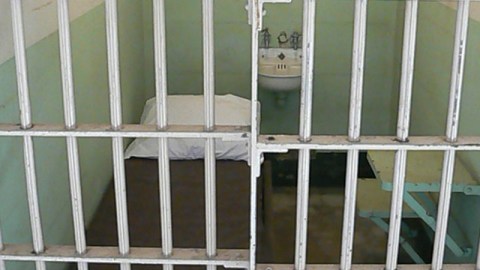The War on Drugs Is Reducing Marriage Rates

The “Just Say No” campaign in the late 1980s increased the severity of sentencing for drug offenders in the U.S. Since that time, particularly since the mid-1990’s, incarceration rates have been steadily increasing to the point that the U.S. now has the one of the highest incarceration rates in the world.
Over the same period, marriage rates have been falling in the U.S. and falling in some communities faster than in others. Economic theory predicts that an increase in the incarceration rate will disadvantage some women when it comes to marriage and reduce the overall marriage rate. The evidence seems to support that view.
New research published in The Review of Economics and Statistics shows that growing incarceration has contributed to declining marriage rates. In fact, this paper finds that about 13% of the decline in marriage since 1990 can be explained by male incarceration.
Incarceration rates vary by socioeconomic class and also by race; in 2004, one in eight black males age 25-29 was incarcerated compared to one in 28 Hispanic males and one in 59 white males. If women search for future husband in their own community—where community is defined over geographic, economic or racial qualities—then some women are more disadvantaged than others. The evidence suggests that this is true. For example, black women are the most disadvantaged—about 18% percent of the decline in marriage rates among black women can be explained by incarceration. Hispanic women are also relatively disadvantaged, with about 10% of the reduction in marriage rates in that group explained by incarceration.
This effect is biggest for women with little education; particularly women with less than a high school education, but also for women with high school and some college. The only group of women unaffected by the trend is women who have a university degree, but it isn’t that surprising that these women do not draw their partners from the same pool of men who have been affected by the increase in incarceration rates.
It’s not all bad news for women though; education and employment for women is increasing with incarceration rates, no doubt the effect of women having to become more independent.
One interesting finding is that divorce rates are also falling because of increased incarceration. The authors seem to think that women are being pickier and are therefore ending up in more stable relationships. I disagree. The logical explanation is that women have fewer outside options and so are more likely to stay in a marriage even when they are not happy. The much bigger problem with women having fewer outside options is that this implies that the men who stay out of prison are getting more say in what happens in the household.
One thing I would be very curious to know is what happens to the level of prostitution when incarceration rates increase? I would be very surprised if it didn’t increase. A surplus of unmarriable men should create demand for prostitution services. This should drive up the price paid to prostitutes drawing more women (who have been left out of the marriage market) into the trade. Now that would be some interesting research.
— Kerwin Kofi, Charles and Ming Ching Luoh (2010). “Male Incarceration, the Marriage Market, and Female Outcomes.” The Review of Economics and Statistics vol. 92(3): pp 614-627.




